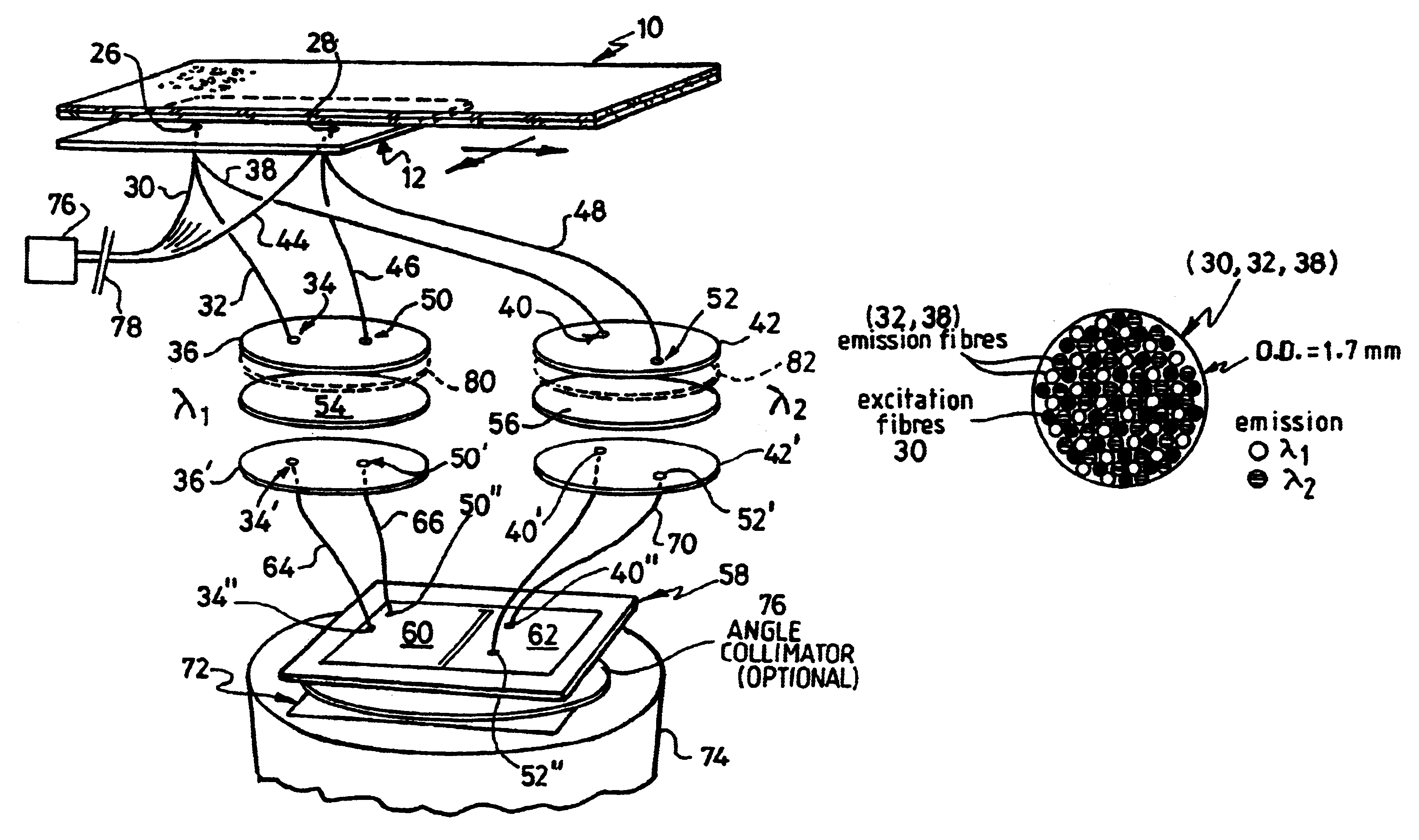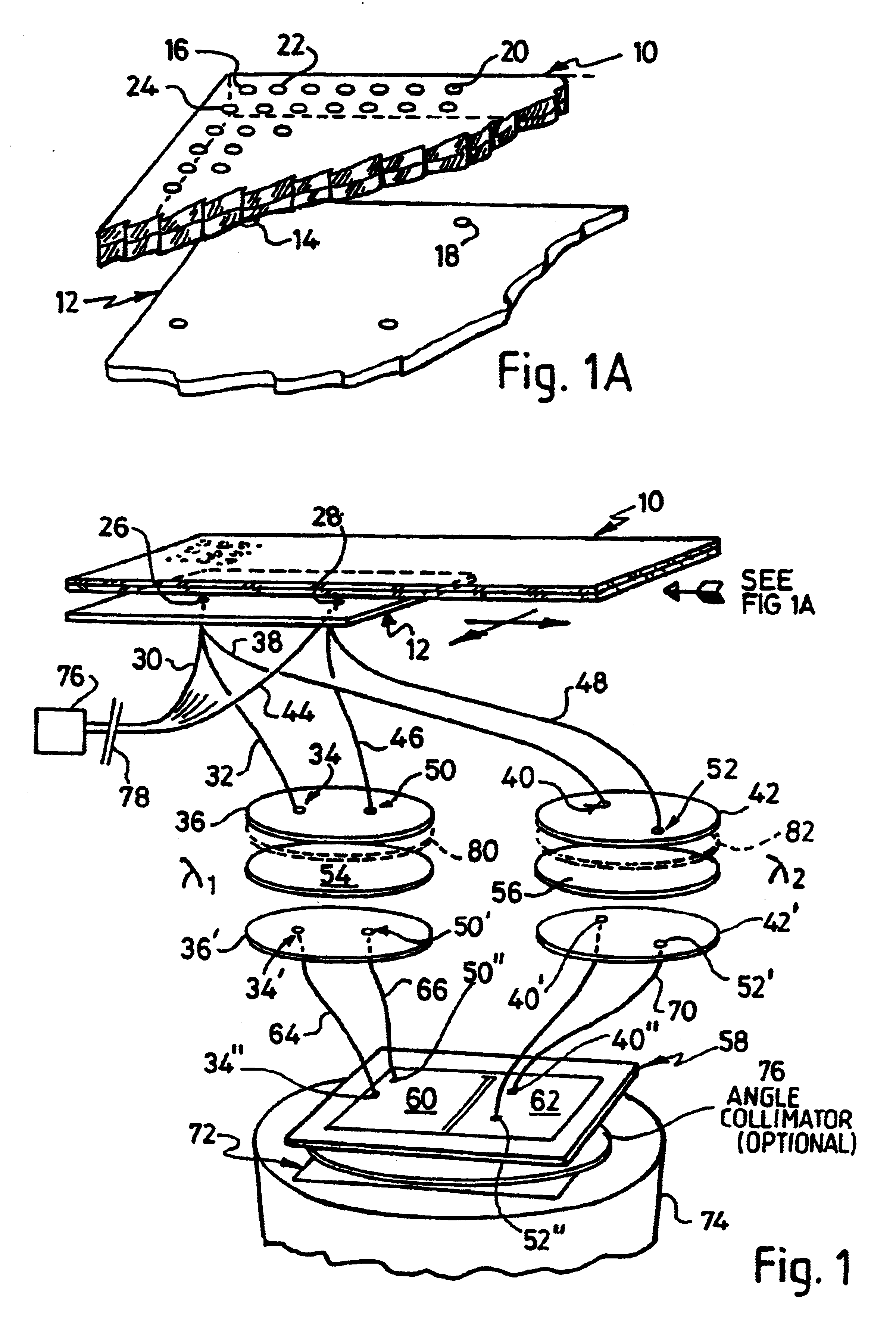Imaging system for luminescence assays
a luminescence assay and imaging system technology, applied in the field of fluorescence assay imaging system, can solve the problems of difficult to obtain a fused fibre optic plate of non-fluorescent material such as silica, inability to distinguish between natural signals and background noise, and complex transmission conditions of such rays
- Summary
- Abstract
- Description
- Claims
- Application Information
AI Technical Summary
Benefits of technology
Problems solved by technology
Method used
Image
Examples
example 1
Fluorescein--A Green Fluorescence Assay
The peak excitation wavelength for Fluorescein in 485 nm and the peak of the emission is in the range 518-523 nm.
An interference filter is chosen whose peak transmission waveband is 525-530 nm and in accordance with the invention blocking filter is selected which attenuates wavelengths below 515 nm--such as a Schott OG 515 filter.
example 2
Coumarin--a Blue Fluorescence Assay
The peak excitation wavelength for Coumarin is 400 nm and the emission wavelength peaks in the range 455-460 nm.
An interference filter is chosen whose peak transmission wavelength is 460 nm and in accordance with the invention a blocking filter is selected which attenuates wavelengths below 455 nm--such as a Schott BG 455.
example 3
--Cy5--a Red Fluorescence Assay
The peak excitation wavelength for Cy5 is 649 nm and the peak emission occurs at 670 nm.
An interference filter is chosen whose peak transmission wavelength is 680 nm and in accordance with the invention a blocking filter is selected which attenuates wavelengths below 665 nm--such as a Schott RG 665.
PUM
| Property | Measurement | Unit |
|---|---|---|
| diameter | aaaaa | aaaaa |
| thickness | aaaaa | aaaaa |
| distances | aaaaa | aaaaa |
Abstract
Description
Claims
Application Information
 Login to View More
Login to View More - R&D
- Intellectual Property
- Life Sciences
- Materials
- Tech Scout
- Unparalleled Data Quality
- Higher Quality Content
- 60% Fewer Hallucinations
Browse by: Latest US Patents, China's latest patents, Technical Efficacy Thesaurus, Application Domain, Technology Topic, Popular Technical Reports.
© 2025 PatSnap. All rights reserved.Legal|Privacy policy|Modern Slavery Act Transparency Statement|Sitemap|About US| Contact US: help@patsnap.com



